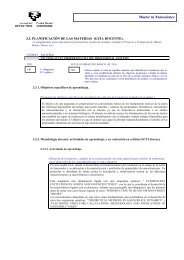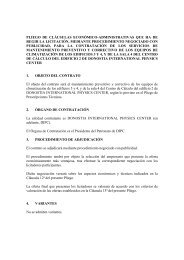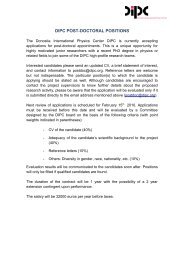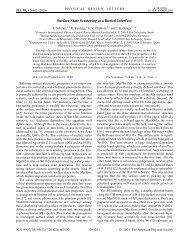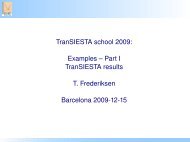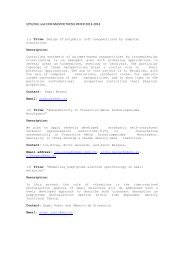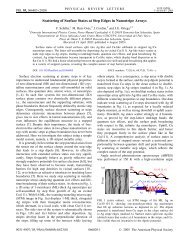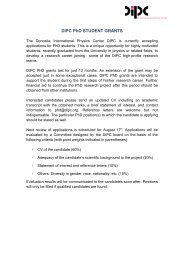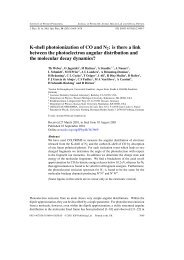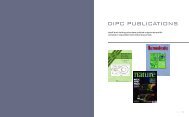Flocculation in Carbon Black Filled Rubber ... - All-electronics.de
Flocculation in Carbon Black Filled Rubber ... - All-electronics.de
Flocculation in Carbon Black Filled Rubber ... - All-electronics.de
You also want an ePaper? Increase the reach of your titles
YUMPU automatically turns print PDFs into web optimized ePapers that Google loves.
<strong>Flocculation</strong> <strong>in</strong> <strong>Carbon</strong> <strong>Black</strong> <strong>Filled</strong> <strong>Rubber</strong> Compounds<br />
Fig. 9. Color of the toluene extract rat<strong>in</strong>g and bound rubber content<br />
obta<strong>in</strong>ed for the rubber compounds around and above percolation<br />
Fig. 10. Low stra<strong>in</strong> dynamic properties obta<strong>in</strong>ed for samples aged at<br />
various temperatures and then cured by electron beam<br />
It is well known that tunnel<strong>in</strong>g effects<br />
largely contribute to electrical conductivity.<br />
This process is <strong>de</strong>scribed by an exponential<br />
<strong>de</strong>pen<strong>de</strong>ncy of the current to the<br />
distance between aggregates [16].<br />
Therefore, the tunnel<strong>in</strong>g is only possible<br />
when the aggregates are at very close<br />
proximity to each other. Because of the<br />
exponential character of the tunnel<strong>in</strong>g<br />
process, any small changes <strong>in</strong> the <strong>in</strong>teraggregate<br />
distance cause significant<br />
changes <strong>in</strong> the macroscopic resistivity.<br />
Two separate sets of the Transmission<br />
Electron Microscope (TEM) experiments<br />
Fig. 11. The flocculation<br />
<strong>in</strong>tensity obta<strong>in</strong>ed<br />
for cured<br />
rubber compounds<br />
prepared with various<br />
amount of<br />
curatives. Compounds<br />
were prepared<br />
with Sn-SSBR<br />
and 50 phr N330.<br />
Ag<strong>in</strong>g at 80 8C for 24<br />
hours<br />
were performed <strong>in</strong> or<strong>de</strong>r to try to observe<br />
the movement of carbon black aggregates<br />
dur<strong>in</strong>g ag<strong>in</strong>g. In one group, the<br />
samples were prepared us<strong>in</strong>g compounds<br />
before and after ag<strong>in</strong>g. In the<br />
second set of samples, the ag<strong>in</strong>g was<br />
performed <strong>in</strong>-situ <strong>in</strong> TEM chamber. No<br />
measurable changes were <strong>de</strong>tected suggest<strong>in</strong>g<br />
that the rearrangement of carbon<br />
black network, if it occurs, is <strong>in</strong> the or<strong>de</strong>r<br />
of a few percent of carbon black particle<br />
diameter. Such small changes would be<br />
significantly below the resolution of the<br />
available equipment and the image analysis<br />
software capabilities. However, at<br />
the same time the measurements performed<br />
dur<strong>in</strong>g this study support the<br />
fact that diffusion process as <strong>de</strong>scribed<br />
by Equation 1 can <strong>de</strong>scribe most of the<br />
obta<strong>in</strong>ed data. However, some anomalies<br />
are observed for cured compounds.<br />
These cases are currently un<strong>de</strong>r <strong>in</strong>vestigation<br />
and will be reported <strong>in</strong> a separate<br />
paper.<br />
The bound rubber analysis shows a<br />
parallel evolution between the amount<br />
of bound rubber <strong>in</strong> the percolat<strong>in</strong>g cluster<br />
and the <strong>in</strong>crease of the flocculation <strong>in</strong>tensity<br />
as measured by electrical resistivity.<br />
The mechanism is still not clear but two<br />
hypotheses could be taken <strong>in</strong>to account.<br />
First, the polymer cha<strong>in</strong> movement can<br />
contribute to the rearrangement of the filler/polymer<br />
network improv<strong>in</strong>g the electrical<br />
conduction. When polymer/filler <strong>in</strong>teractions<br />
play a significant role, thermodynamically<br />
driven movement of polymer<br />
cha<strong>in</strong>s is rearrang<strong>in</strong>g <strong>in</strong> space the attached<br />
carbon black aggregates. Second,<br />
the bound rubber improves the electrical<br />
conduction whether <strong>in</strong>creas<strong>in</strong>g the<br />
tunnel<strong>in</strong>g probability or conduct<strong>in</strong>g electrical<br />
current between aggregates attached<br />
to the same polymer cha<strong>in</strong>. Previously,<br />
Abo-Hashem [17] suggested<br />
that the strong <strong>in</strong>teraction between carbon<br />
black and rubber led to band-like<br />
conduction. More studies are <strong>in</strong> progress<br />
to verify these hypotheses.<br />
KGK Kautschuk Gummi Kunststoffe 55. Jahrgang, Nr. 11/2002 603



